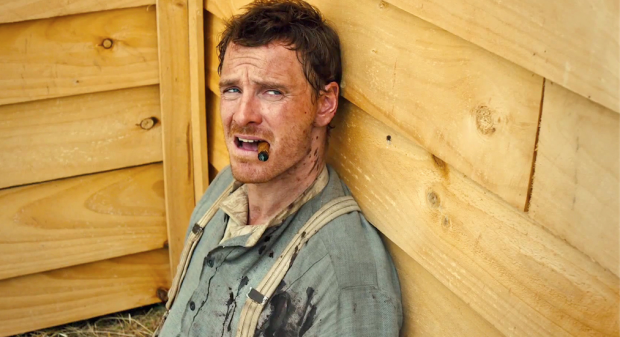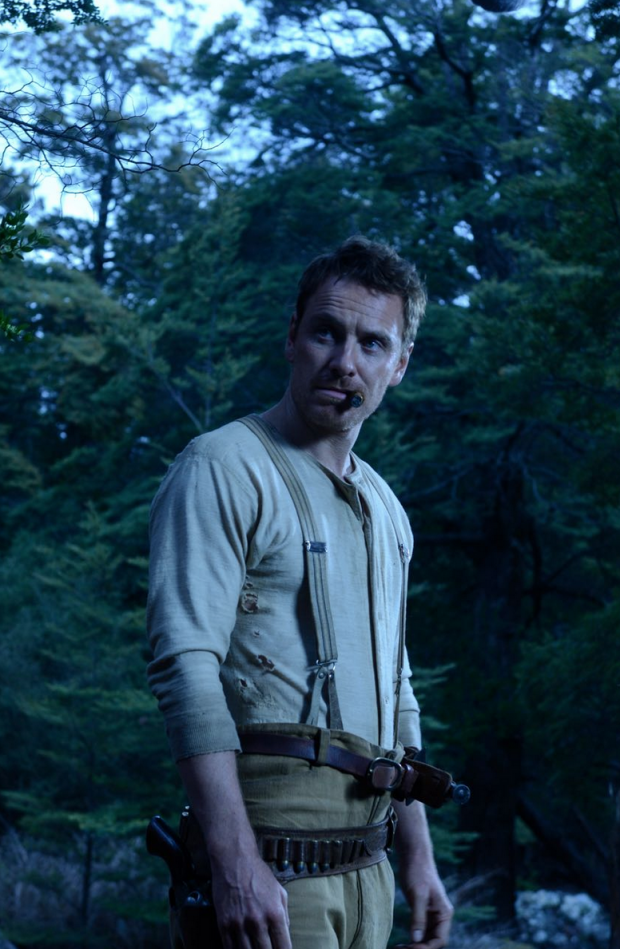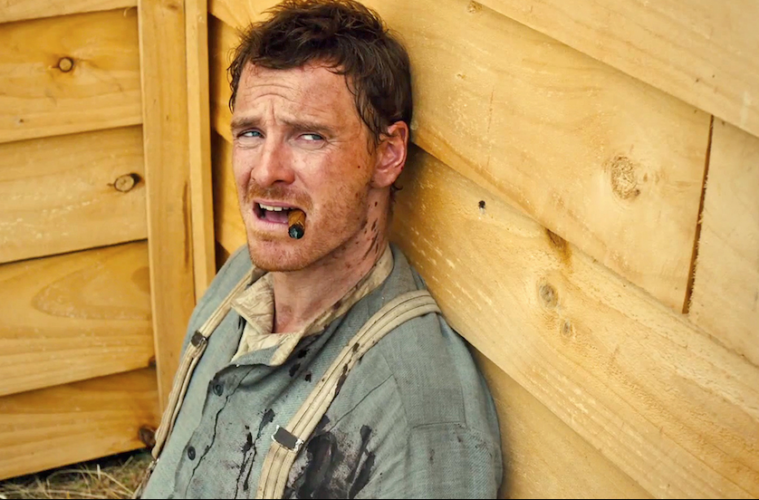
“The treacherous landscape of the west has been captured in numerous entries in the genre, but rarely with the distinctive vibrancy cinematographer Robbie Ryan (Fish Tank) brings to it in Slow West,” I said in my Sundance review, “John Maclean – who has had a long relationship with his star Michael Fassbender in a handful of shorter form projects — makes his directorial debut here, clearly reveling in providing his twist on the genre, while still holding true to its roots.”
With the film now arriving in theaters this weekend, I had the chance to talk with Maclean about his debut. We discussed his influences, the casting of Fassbender and Ben Mendelsohn, the execution of violence, his biggest challenges, the most exciting sequence in film history, the cinematography, and much more. Check out the conversation below.
The Film Stage: You’ve known Michael Fassbender for at least a few years now. Can you talk about the formation of this project and if you had to wait until he had more attention?
John Maclean: Yeah, I think it was [during] Inglorious Basterds when I first got to work with him on my first short film [Man on a Motorcycle]. I just wanted to make sure it was enjoyable for him to make. We worked quite well together so there was discussions of doing another short. So maybe a year or two later we did Pitch Black Heist, which is three days I had with Michael. Again, it was just a positive experience and I think that was the first thing to be run through his production he set up with him and his agent. I guess I knew then that a future would follow with the production company. So after Pitch Black Heist I started writing very much with him in mind, both of us wanting to do a western and he was up for it. So he was in from the beginning.
 One of the first things that caught my eye when I saw it at Sundance was cinematographer Robbie Ryan’s credit in the opening. I knew it would be beautiful, and I wasn’t let down. Can you talk about working with him and how you found him?
One of the first things that caught my eye when I saw it at Sundance was cinematographer Robbie Ryan’s credit in the opening. I knew it would be beautiful, and I wasn’t let down. Can you talk about working with him and how you found him?
Yeah, it was again, Pitch Black Heist. I was looking for a director of photography to shoot that and my producer at the time was a friend of Robbie’s and I think there was some favors owed. So she managed to get him to shoot my short and hadn’t seen any of his work. But I just met him and liked him and I told him I wanted to shoot on a tripod, deep focus, and I think he was used to being requested for being the master of handheld and shallow focus. [Laughs] So it was a case of just liking him as a person first of all, then when we shot Pitch Black Heist, he shot it so amazingly and obviously he turned his hand to deep focus and not handheld amazingly. It was the same thing with Slow West. I wanted a certain fixed camera look and deep focus look. As well as not having to double check the composition, he’s certainly the master of light as well. Yeah, it was a great collaboration.
The movie definitely has the elements you might expect in a western, but there’s also a fantastical feel, which has to do with his cinematography — his vibrancy and brightness. I’ve never seen a western quite like this. Can you talk about those discussions?
Yeah, I had that discussion with everyone, from the lighting department to costumes because I think I said to everyone, “I don’t want a brown western.” [Laughs] The more modern the western, the browner they’ve become in the grading, in the costume, and in the look. I didn’t want to go back. For the color, I gave a lot of references that were more The Wild Bunch and some of these late 60’s westerns that had super saturated blues and so that was definitely discussed beforehand. Then the light from the weather when we were shooting did the rest. And, of course we made sure we got Robbie’s usual lighting man over as well. They’re a strong team. It was very much in the planning, for sure.
The way you handle the violence — it’s a bit different in the finale — but leading up to it, it’s these bursts. It almost reminded me of another Fassbender film, Inglourious Basterds, where violence is used very effectively in the build-up.
Yeah.
When it comes to violence in movies today, do you find this method to be more effective?
Yeah, when you look at noir cinema of the 50’s and when there was censorship involved, violence had to be shot a certain way, but it benefited from it. When I was writing [Slow West], it was very much a big build-up, tiny little bit of action, and then all the repercussions endlessly explored. That’s sort of what you see in the classic how-to books, but that’s the way I think it should be and when I see films that even have come out this year — I won’t name names — that glorify [violence] because we’re sort of enjoying the violence. It seems a bit much more me, actually. I’m more old-fashioned in that respect. The only problem is — I think Tarantino has this as well — but when you don’t show the violence on screen, sometimes it’s worse for people, because their imagination runs wild. So I maybe I have a little bit of that as well because some people have said there’s some violent scenes and then I’m saying, well you don’t see anyone get shot.
Yeah, exactly.
Yeah, in general the rule was to keep it like that.

Kind of to your point about that, I read an interview where one of your influences is Robert Bresson and the way he uses insert shorts to add so much texture to his movies. You kind of have that too.
Yeah, that almost started in the writing. With Bresson as well, he would write that kind of set-up that would involve the hand on the door or the bit of bread getting picked up or whatever. For me, some of the most exciting action sequences in cinema history are in Pickpocket. This sort of fluid editing and the way it’s shot. For me, it’s such a bigger kick than seeing something explode.
Yes, totally.
Absolutely with Slow West. In the writing, I started writing, the hand goes to the butter, the hand goes to the cup. Then in the storyboarding it was very much done like that. It becomes a bit of a problem when people see the amount of shots you have to shoot in a day. There’s like 50 set-ups and the AD starts panicking and you say, “It’s just a hand! It’s just a hand picking up a cup and we move on. We just do it once.” You do have to shoot a different way to do that. You’re almost in-camera editing with collage-style filmmaking, which to me is just more interesting than handheld covering a scene and following actors and making the story up in the edit, which I didn’t really want to do.
With this being your first feature and going to Sundance, you don’t really see films like this with this much control and structure. For something seemingly so planned, was there any big challenges?
Yeah, just the usual working with horses. [Laughs] And working with actors that told me they can ride horses in rehearsals and then they turn up and maybe they can’t. Mainly, just practical things. We were so lucky with the weather. There was no sort of wet weather cover so we really were risking a whole outdoor shoot. It was amazing. Even when it was supposed to be windy in the script it became windy. It was freaky. That made the shoot incredibly enjoyable. Yeah, the shoot’s a blast. I think just maybe the editing, because I’ve only ever edited short films. It was a massive learning curve, the whole thing.
The way the structure is, there’s a build-up to this explosion in the third act, but was there any resistance to the pacing of the first two acts?
Not really. The tough thing about the edit — which was really just between me and the editor — was balancing if I tried to speed everything up, up to the point of the shoot-out, the shoot-out would become less dramatic for a start. But, secondly you’d lose the sense of the slow west and the vast journey, how long it takes to get to these places and the fact that they’ve been together for awhile traveling. So it was a balance of that and not actually having too much of that so it didn’t become lots of shots of landscapes and men on horses. I think that was a really fine line to sort of get the real balance of how much traveling and how much action, leading up the end siege, which was so choreographed it ended up editing itself, in a way.
That’s great. I wanted to talk about the casting of Ben Mendelsohn, who has just kind of exploded the last few years. He’s such a great presence. What was the first thing you saw him in?
It’s Animal Kingdom. Yeah, I loved it.

Can you talk about his presence on set and what he brought to the movie?
Yeah, I think I was still writing Slow West when I watched Animal Kingdom so I think he seeped into it, the character of it. When I talked to Ben about it, I think we talked a little bit about Blood Meridian and one or two of the characters and Cormac McCarthy and maybe the baddie in McCabe & Mrs. Miller, which is another big influence. More than any other character — because I think none of the other characters I really referenced films for — I saw Ben more of an archetypal, sort of someone from a western. So I did sort of give him a bit more touchstones then the rest that he just brings with his talent and personality.
You wrote it, directed it, and everything. What was the biggest surprise for you from scripting and then seeing the final cut?
Nothing hugely. I sort of write by kind of watching the film in my head and then I storyboard the pictures I imagined and then shoot the storyboard. So it’s not quite as simple as that. Probably in the next film I have to leave more room for other stuff to happen that brings it away from that because that’s just another style of filmmaking I’m interested in. So that’d be a nice new thing to do, but for this I felt that’s the way I wanted to shoot it and that’s the way the story was going to be told. It felt very much like I was keeping the essence of the script. I think the flashbacks was always a difficult thing as well because you shoot more and it was a very fine line between flashback and dream sequence so they had to solve things that had to be reworked and didn’t work until they worked and then worked. See what I mean?
Yeah. After doing a western, which is an ambitious feat for a first project, what sort of genres would you like to explore next?
Well, I’m a big fan of noir and I my short film was a heist. The whole heist-noir-crime genre is interesting to me. Especially maybe a contemporary take on it. I still like the idea, with Slow West, having magic realism and having that very different take on the genre. So I’d like to do that with something maybe contemporary.
Lastly, speaking of your shorts, I’ve tried to watch them for awhile and they are hard to track down in the U.S. Is there any distribution coming?
Yeah, we’re working on it. There absolutely will be, yeah. It’s amazing that my first short film, Man on a Motorcycle, hasn’t actually managed to get on the internet at all, which is quite incredible in this day and age. Yeah, I need to get it out there. Possibly DVD or possibly a package.
Great, I’ll look forward to it then. Congrats on the film.
Thanks so much, nice to chat.
Slow West hits limited theaters on May 15th and will expand throughout the summer.

